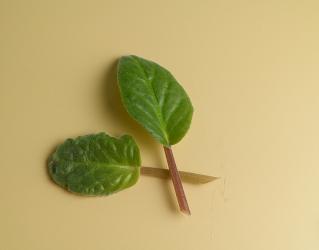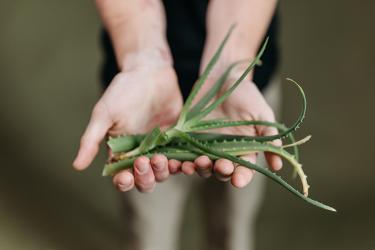Winter months can make it difficult for gardeners to flex their green thumbs. Give your interiors a boost by propagating your indoor plants to encourage new growth and add greenery to gloomy interiors.
There are three ways to propagate a plant: cutting, dividing or using offsets (otherwise known as “pups”). Depending on the type of plant you have, certain techniques can be beneficial or harmful when it comes to sprouting new growth.
Before you begin, some basic items to have on hand include scissors, a sharp knife, new growing pots and potting soil.
Cutting
There are two types of cutting techniques for propagation. The first is using a stem cutting, which comes from cutting just before the stem’s node so the cutting will consist of both a leaf and a stem. The other type of cutting is called a leaf cutting. This is when only a leaf is taken from the mother plant, not attached to a stem.
Stem Cutting
1. Cut off one stem with the leaf attached. Remember to cut just below the node!
2. Place the cutting in a glass or jar of clean water and place in a well-lit area.
3. Make sure the leaves are NOT dipping into the water. If necessary, cut off excess leaves until only the stem is submerged.
4. Wait for new roots to develop!
5. Once roots are developed, transfer to a new pot with soil.
Leaf Cutting
1. Cut a leaf from the plant (with no stem attached).
2. Allow the leaf to dry for 48-hours. Look for a scab to form along the cut edge!
3. Plant the dried leaf in soil and place in a well-lit area.
4. Moistened the soil regularly and wait for new growth!
Plants that propagate best through cuttings: African violets, pothos, umbrella plants, rosemary and prayer plants.
Division
Division is done just like its name! Plants are propagated through dividing the original plants root ball to create multiple plants.
Division
1. Remove original plant from the pot to expose the roots.
2. Split the root ball into multiple plants. You may need to use a pair of scissors or a sharp knife to separate some of the roots.
3. Pot each new plant into a new growth pot.
4. Water normally and wait for new growth!
Tip: When examining the root ball, look for areas with healthy sections of roots to help determine where to divide the original plant. Also, when planting the new sections, be sure to plant them the same depth as the original plant.
Plants that propagate best through division: Boston ferns, peace lilies, ZZ plants and snake plants.
Offsets
Offsets, otherwise known as “pups,” are mini versions of the original plant that can be seen growing next to the mother plant in the pot.
Offsets
1. Cut the offset with a sharp knife or gently wiggle it free from the pot.
2. Clean soil off the offset with clean water.
3. Place somewhere cool and dry for a couple of days.
4. Pot the offset in new soil and water regularly.
5. Wait for new growth!
Plants that propagate best using offsets: Spider plants, aloe vera and ponytail palms.















